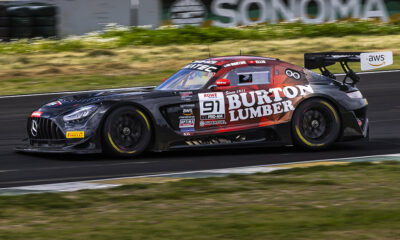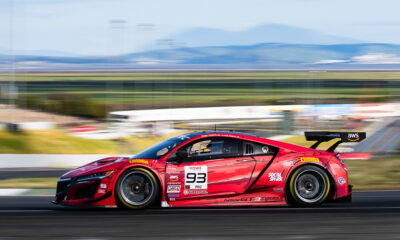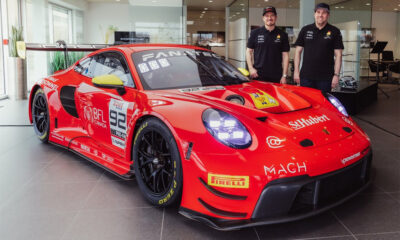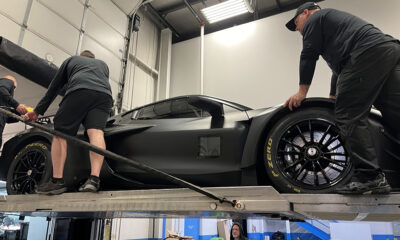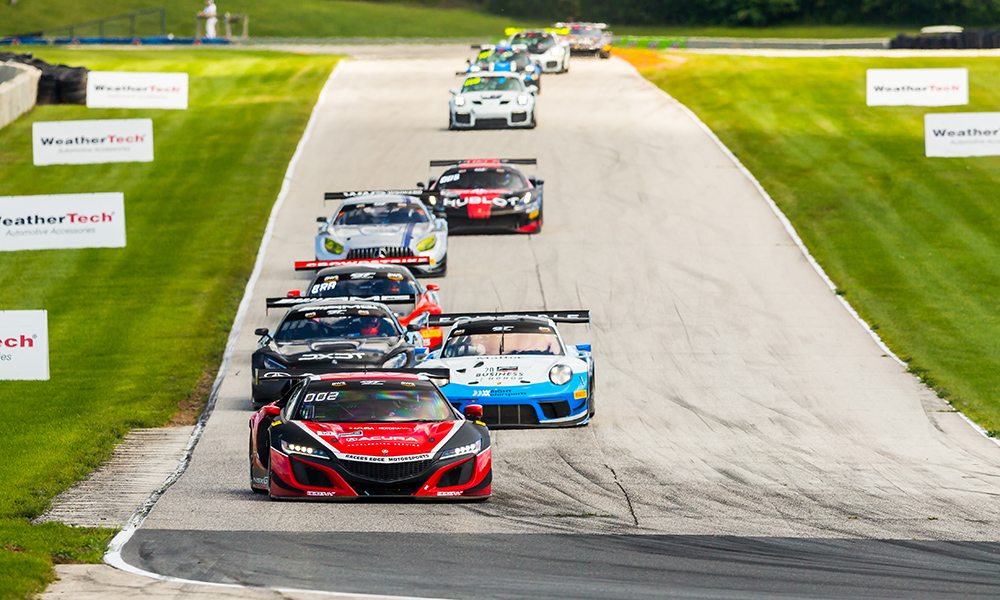
Photo: Fabian Lagunas/SRO
Stephane Ratel says that “everything is on the table” in regards to the future of GT World Challenge America powered by AWS although indicated they won’t be able to rebuild the grid if changes are made to the format each year.
The GT3-based championship, which is in its second year of duel 90-minute races, has faced dwindling car counts all season and particularly amid the coronavirus pandemic, which has seen several entries with foreign drivers drop out due to travel restrictions.
Last month’s event at Road America featured a series-low six-car GT3 field, which was again combined with the new-for-2020 GT Sports Club America for the first 40 minutes of each race.
With SRO America having held meetings with team owners during the event to seek input for the future, Ratel has cautioned making drastic changes to the current format for 2021, despite the depleted grid.
“I think we will discuss it with the U.S. teams,” he told Sportscar365. “Of course I would rather have 24 cars in one and 24 in the other, but let’s be realistic. That’s not going to be the case. I think it could be the solution for the time being [to keep the format unchanged].
“Everything is on the table. When you have seven cars entered, you really have a big question mark on what to do.
“But if we keep on changing every year we’re not going to go very far.”
Ratel believes that finding more ways to reduce costs is one of the key steps that’s needed.
He also acknowledged the variety of options of where to race with GT3 machinery in the U.S. hasn’t helped the situation either.
“The story is simple,” Ratel said. “When IMSA took GT3, the grid was basically divided in half. We lost half the grid. That’s a fact. From there, there was a lot less cars and we started to [struggle].
“I see the comments of fans on websites. But the reality we then faced with, being on the IndyCar package was good, but it meant very long weekends. Drivers had to be there for four or five days running.
“The biggest problem we have in our type of racing is how much time do you spend away from home and business versus how much time you spend behind the wheel? That’s the essential question.
“[At the Nürburgring] we started Free Practice on Saturday morning. If everything is in place earlier, some busy drivers can literally arrive this morning. That was part of the success.
“When we had [American] drivers really complaining, we felt that if we were continuing these five-day weekends [it wouldn’t work].
“When we decided to move to more standalone events, it was about having a shorter weekend with more time for drivers. From that, we started one season with 18 cars and finished with 11. Then we had a real problem, so we spoke to the teams.”
Ratel said the “general consensus” with American teams is now that GT3 and GT4 does not offer a big enough of a difference, with many customers opting for the more cost-effective GT4 approach, which has seen grids in the high-teens to low 20s for both Pirelli GT4 America Sprint and SprintX.
“GT3 is more expensive to run, so if we run the same format [as GT4] it doesn’t work,” he said. “That’s something we never heard in Europe, because our Sprint is exactly the same format in terms of track time, but we never heard that.
“It was a consensus [in America]. I met with all the teams at the end of the year and they were all basically saying the same thing. Why don’t we do two races of 90 minutes that gives more time, but you need refueling. There was a real enthusiasm about it.
“The first race at COTA we had 24 cars, so it looked like we succeeded. But maybe [the teams] didn’t do the math and again it went down to 14. So it looks like maybe they didn’t appreciate the cost of this with the extra people you need for refueling and so on, and it didn’t work. In my view, you have to try until you find the key.
“I think changing again might not be the solution. Maybe a mix of World Challenge and Sports Club, with part of the grid going for 90 minutes and the other half just doing the first 40 minutes might be an in-between solution until things really get going again.
“But that will need to be discussed with the U.S. teams.
“Especially in this time of COVID, nobody from our organization in Europe has been to the U.S. I’m planning to go to Indy if we can manage. Then we’ll discuss more on what to do for next year. We’re not giving up.”
Headline GT3 Event Will Eventually Grow GTWC America Field
Ratel believes a headline GT3 event in North America, such as the Indianapolis 8 Hour, will ultimately lead to a larger GTWC America field in the future.
“I have been saying the same thing all along,” he said. “We need a headliner event. We need an event that is popular enough that the teams want to [race].
“The Nürburgring 24 has been essential to grow GT3 in Germany. In our series, in Europe, it’s been the 24 Hours of Spa. In Australia, you have a very strong GT3 scene because of Bathurst. Macau certainly contributed to GT3’s success in Asia and Suzuka.
“And now in America GT3 has been relegated as being a fourth category [in IMSA] and never really had a headliner.
“OK, Daytona and Sebring are strong, but you’re still fighting for class wins. You need to have an event where there’s some prestige if you win overall.
“The difficulty is that it takes a lot of time to build an event with prestige. Will we succeed? I don’t know. I think Indianapolis is the place… We have a grid this year in a very challenging environment, so let’s see if we can build from there.”
Daniel Lloyd contributed to this report


















